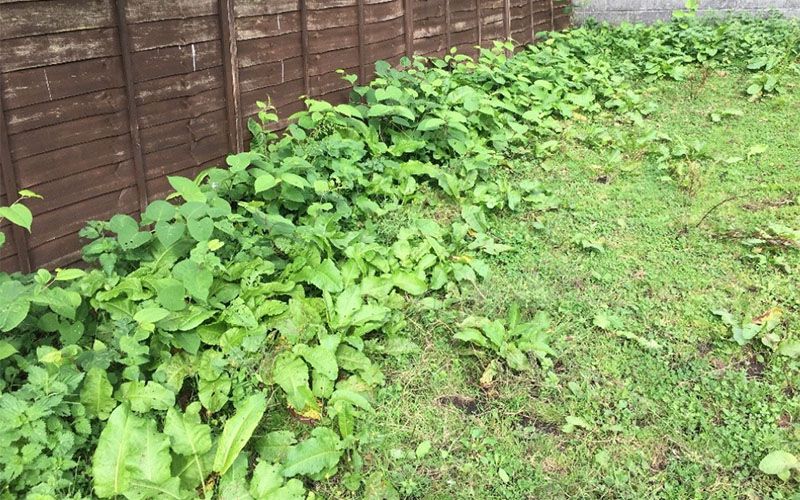Japanese knotweed doesn’t fall from the sky … or does it? Here are eight ways this problem plant can find its way to your land.

A history of spreading
When Japanese knotweed was brought to London in 1850, the Victorians fell in love with the non-native plant. In fact, they put it in their gardens and used it to stabilise the soil in and around railway lines, rivers and mining districts. Today, Japanese knotweed spreads unhindered, and causes a lot of damage, unless we professionally remove it... Let's hear it for the Victorians!
How Japanese knotweed spreads
Japanese knotweed spreads when fragments of its stem or root are broken away and fall onto new ground. This happens easily, which is why knotweed is such a huge problem in the UK today. So, how exactly does Japanese knotweed get onto our wasteland, parks, development sites and gardens?
1. Rivers
Rivers and streams are notorious for spreading Japanese knotweed. After all, the Victorians used knotweed canes to stabilise embankments. And today, fragments of the rhizome can are easily carried away further down steam to new sites … including our gardens!
Unfortunately, increased flooding has also helped knotweed to spread throughout the country.
2. Railway lines
If your property lies next to railway lines then you are more likely to find an infestation on your land. As with rivers, the Victorians made use of Japanese knotweed canes to line train tracks and the surrounding embankment. In fact, when home or landowners make a claim against Japanese knotweed, the defendant is often Network Rail!
3. Mining locations
Over a hundred years ago, miners used Japanese knotweed to stabilise the land near and around mining districts. Even today, places once known for mining are more at risk from Japanese knotweed infestations.
Sadly, South Wales, Yorkshire and the West Midlands are therefore especially prone to the presence of this highly invasive weed.
4. Fly-tipping
Not only an eyesore, fly-tipping can encourage Japanese knotweed to spread. This is because many people illegally dump knotweed clippings, allowing it spread to new locations – including your garden, land managed by local authorities, and property development sites.
5. Birds
Although irregular, it’s not impossible for birds to pick up and transport Japanese knotweed to new habitats. Japanese knotweed can literally fall from the sky! Typically, birds and other critters will pick up knotweed in their mouths to use for nesting and can drop these clippings wherever they go.
6. Humans & pets
Have you accidentally brushed past a knotweed plant whilst out on a hike or leisurely afternoon stroll? Has your dog perhaps frolicked through a forest of knotweed canes? We are not always aware of the dangers that lurk around us.
Though it is not a frequent occurrence, knotweed has been known to be transported via clothing, shoes, and on animal hair and paws. So, watch your step, and keep your eyes peeled!
7. Introduced soils
If you have imported soils on your land, such as from a friend’s garden, you may find their soil is contaminated and contains fragments of knotweed. In this instance, you will unknowingly have infected the area, and as we know, even the smallest fragment of rhizome can quickly grow into a vast Japanese knotweed infestation.It’s always best to check the materials of the soil you are introducing to your land.
8. Neighbours
Of course, it’s likely Japanese knotweed has entered your property via the neighbours land. They too are susceptible to being invaded by Japanese knotweed from rivers, railways and so on.No matter how Japanese knotweed found its way onto your land, getting rid of it before it takes over it priority number 1.
Contact us today via our online form or give us a call on 0330 6781077.